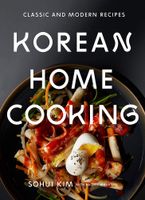🍜 Check out our Noodle bookshelf, and save 25% on ckbk Premium Membership 🍜
Desserts
Hu-Shik
By Sohui Kim
Published 2018
For Koreans, dessert, or hu-shik—which really means “after meal”—used to mainly be seasonal ripe fruit. We’d have Korean yellow melon in July or a really juicy peach in August; watermelons in late summer; grapes or persimmons in fall. You’d just slice them up and eat them out of hand, then in winter you’d have toasted chestnuts, peeled and eaten at the table. Historically, finishing every meal with something very sweet was just not what we did—instead we looked to nature.
Become a Premium Member to access this page
Unlimited, ad-free access to hundreds of the world’s best cookbooks
Over 150,000 recipes with thousands more added every month
Recommended by leading chefs and food writers
Powerful search filters to match your tastes
Create collections and add reviews or private notes to any recipe
Swipe to browse each cookbook from cover-to-cover
Manage your subscription via the My Membership page
In this section
Advertisement
Advertisement


